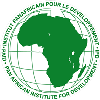DEALING WITH AFRICA’S INFRASTRUCTURAL DEFICITS IN THE 21ST CENTURY
Abstract
Abstract
Africa lags behind the other developing regions in nearly all kinds of economic and social infrastructures. Using a descriptive approach, the paper identifies power supply, transportation, and ICT connectivity as the key economic infrastructure areas that African countries currently have very high deficits. The continent’s infrastructure deficit is compounded by poor maintenance culture and inadequate new investments. Filling the infrastructure gaps involve the mobilization and prudent use of long-term funds, private investment promotion, and management, and easing the processes of public procurement without ignoring the need to achieve value-for-money implementation. Additionally, sustainability of infrastructure development requires the collaborative efforts of government, donors, private investors, multilateral agencies and civil society organizations.
JEL Code: O11, O18, R11, R58
Key Words: infrastructure projects, infrastructure deficits, fund mobilization, PPP, implementation, maintenance culture, stakeholder approach.
Full Text:
PDFReferences
African Development Bank (ADB) (2013) At the Center of Africa’s Transformation: Strategy for 2013 -2022
Boston Consulting Group (2013b) Bridging the Gap: Meeting the Infrastructure Challenge with PPPs.
Boston Consulting Group (BCG) (2013a) Bridging the Gap: Meeting the infrastructure Challenge with Public - Private – Partnerships, February
Center for Strategic and International Studies (CSIS) (2016) Barriers to Bankable infrastructure Incentivizing Private Investment to fill the global infrastructure Gap Rowman and Littlefield: London
Dza1, M., R. Fisher & R. Gapp (2013) Procurement Reforms in Africa: The Strides, Challenges, and Improvement Opportunities Public Administration Research 2(2) 49 – 57
Ernst & Young Global (EY) (2014) Bridging the Gap: Ensuring Execution on Large Infrastructure Projects in Africa: Lessons from Korea and Japan’s infrastructure development
Essia, U. (2015a) Financing Model for Sustainable Development of Infrastructures in Sub-Saharan Africa – The Case of Nigeria www.paidafrica.org/paidwa
Essia, U. (2015b) Civil Society Organization - Public - Private Partnership in Cameroon: Review of Possible Models, Challenges and Prospects www.paidafrica.org/paidwa
Essia, U. and A. Yusuf (2013) Public-Private-Partnership and Sustainable Development of Infrastructures in Nigeria Advances in Management & Applied Economics 3(6) 113-127
European Center for Development Policy Management (ECDPM) (2013) The Complexities of Regional Infrastructure Planning. Political Economy of Regional Integration in Southern Africa Series August
Fedderke, J and R. Garlick (2008) Infrastructure Development and Economic Growth in South Africa: A Review of the Accumulated Evidence Policy Paper No. 12
Gutman, J., A. Sy and S. Chattopadhyay (2015) Financing African Infrastructure: Can the World Deliver? A Publication of the Brookings Institution, March
IMF (2014) World Economic and Financial Surveys Regional Economic Outlook Sub-Saharan Africa
International Center for Trade and Sustainable Development (ICTSD) (2015) Strengthening the Global Trade and Investment System for Sustainable Development
International Monetary Fund (IMF) (2015) Filling the Gap: Infrastructure Investment in Brazil Working Paper WP/15/180, July
Kim, B. (2006) Infrastructure Development for the Economic Development in Developing Countries: Lessons from Korea and Japan GSICS Working Paper Series No. 11
Lauder Institute (2015) Globalization TrendLab 2015: Overcoming the Infrastructure Gaps July 7
Pravakar S., R. Dash and G. Nataraj (2010) Infrastructure Development and Economic Growth in China Institute of Developing Economies (IDE) Discussion Paper No. 261, October
PWC (2014) Trends, challenges and future outlook: Capital projects and infrastructure in East Africa, Southern Africa and West Africa November www.pwc.co.za/infrastructure
Pyke, C. (2015) GRESB Infrastructure: Filling an ESG Data Gap for Infrastructure Investors LinkedInShare
Redifer, L. (2010) New Financing Sources for Africa's Infrastructure Deficit IMF Survey Magazine: Countries & Regions, July 21
Rives, J. and M. Heaney (1995) Infrastructure and Local Economic Development Regional Science Perspectives 25 (1) 58 – 73
The African Development Bank (ADB) (2010) Infrastructure Deficit and Opportunities in Africa Economic Brief 1 (September)
Tony Elumelu Foundation (2015) Plugging Africa’s infrastructure deficit A publication of the Africapitalism Institute
Trinity (2011) PPPs: Bridging the gap of Infrastructure Finance in Africa. Focus Feb., 26
UN-HABITAT (2011) Infrastructure for Economic Development and Poverty Reduction in Africa, Nairobi
World Bank (2008a) Making Sense of Africa’s Infrastructure Endowment: A Benchmarking Approach Africa Infrastructure Country Diagnostic (AICD) Working Paper 1 January
World Bank (2008b) Infrastructure and economic development in Sub-Saharan Africa
World Bank (2008c) The Growth Report: Strategies for Sustained Growth and Inclusive Development
World Bank (2010) Africa’s Infrastructure: A Time for Transformation Foster, V. and C. Briceño-Garmendia (Eds.)
World Bank 2013 Factsheet: Infrastructure in Sub-Saharan Africa
World Economic Forum (2015) Blueprint for Africa's infrastructure deficit June
Yoshino, N. and M. Nakahigashi (2000) The Role of Infrastructure in Economic Development, November 22, A Project supported by the Center of Excellence, Ministry of Education, affiliated to Keio University.
Refbacks
- There are currently no refbacks.
